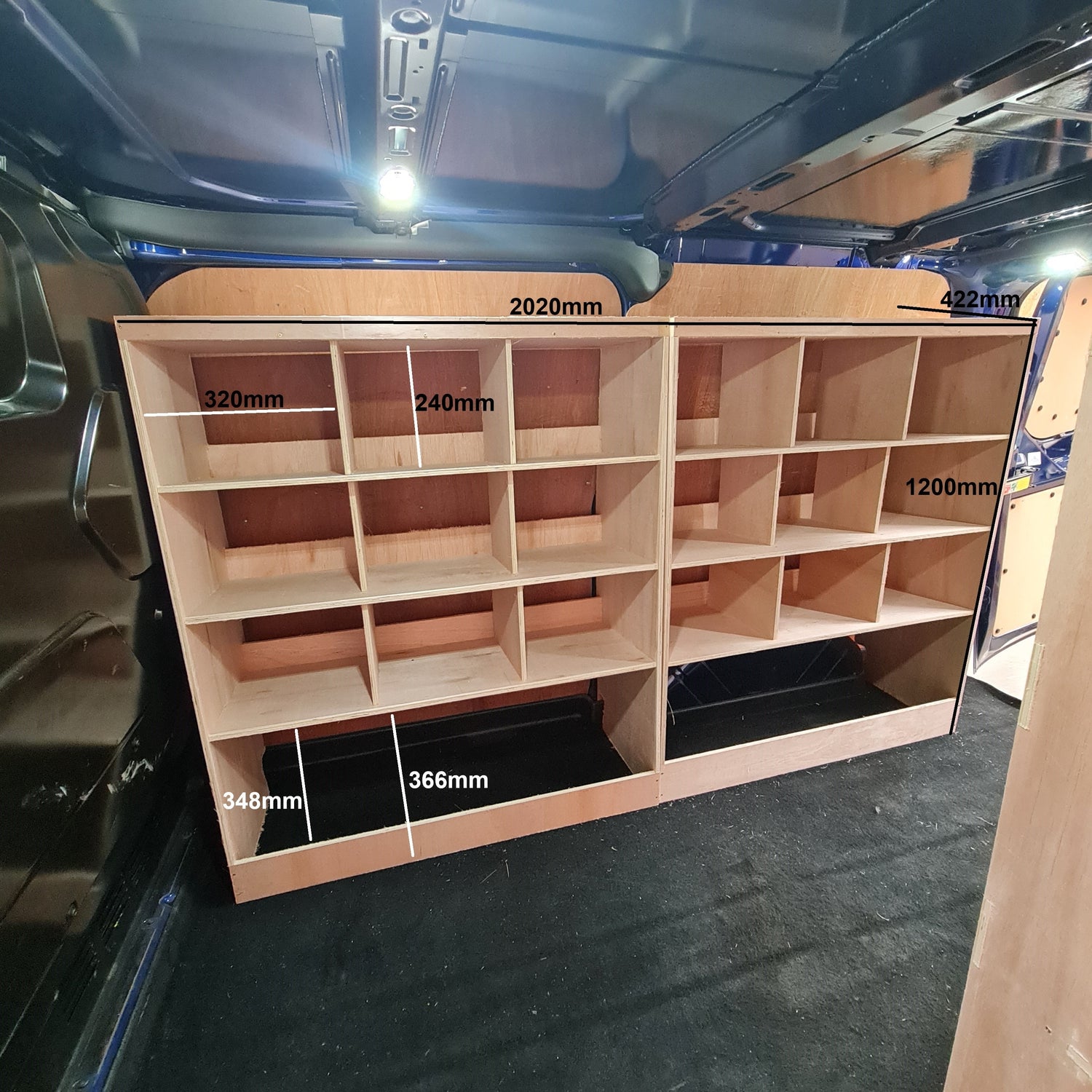Silicone holders have become increasingly popular in recent years, whether for organizing belongings in your van, securing items in your home, or providing non-slip storage in various environments. These versatile accessories owe their popularity to silicone's remarkable durability, flexibility, and resistance to temperature extremes. However, to maximize the lifespan and effectiveness of your silicone holders, proper maintenance is essential. This comprehensive guide explores effective cleaning techniques and maintenance strategies to ensure your silicone holders remain clean, functional, and looking their best for years to come.
Understanding Silicone Material Properties
Before diving into maintenance techniques, it's important to understand what makes silicone unique as a material. Silicone is a synthetic polymer made primarily from silicon, oxygen, carbon, and hydrogen. Unlike many plastics, silicone offers:
-
Extreme temperature resistance (typically -40°F to 450°F)
-
Hydrophobic properties that resist water absorption
-
Chemical stability that prevents breakdown from most household cleaners
-
Natural resistance to bacteria and fungal growth
-
Remarkable durability and tear resistance
-
Non-toxic and food-grade safety (in most formulations)
These properties make silicone holders excellent for various applications but also influence how they should be maintained. The good news is that silicone's inherent properties make maintenance relatively straightforward compared to many other materials.
Daily Cleaning: Simple Techniques for Regular Maintenance
For routine cleaning of silicone holders, a gentle approach is typically sufficient to maintain their appearance and functionality:
Warm Water and Mild Soap Method:
-
Fill a basin with warm (not hot) water
-
Add a few drops of mild dish soap
-
Submerge the silicone holder and gently agitate
-
Use a soft cloth or non-abrasive sponge to wipe surfaces
-
Rinse thoroughly with clean water
-
Allow to air dry completely before using or storing
This basic cleaning method works well for removing dust, light oils, and everyday grime that accumulates on your silicone holders. The key is consistency—implementing this cleaning approach weekly prevents buildup that can become more difficult to remove later.
For silicone holders used in van organization, consider keeping unscented baby wipes in your vehicle for quick cleaning on the go. These provide sufficient moisture and mild cleaning action without the need for water access, making maintenance convenient during travel.
Tackling Stubborn Stains and Discoloration
Despite silicone's resistant nature, persistent stains and discoloration can develop over time, particularly when exposed to strong pigments, smoke, or prolonged sunlight. Here are effective methods for addressing these more challenging issues:
Baking Soda Paste Treatment:
-
Create a thick paste using baking soda and a small amount of water
-
Apply the paste directly to stained areas
-
Gently scrub using a soft toothbrush in circular motions
-
Allow the paste to sit for 10-15 minutes
-
Rinse thoroughly and wash with soap and water
-
Repeat if necessary for particularly stubborn stains
White Vinegar Soak:
-
Create a solution of equal parts white vinegar and warm water
-
Submerge the silicone holder completely
-
Allow to soak for 2-3 hours (overnight for severe discoloration)
-
Scrub gently with a soft brush
-
Rinse thoroughly and allow to dry
Hydrogen Peroxide Method (for White or Clear Silicone):
-
Place the silicone holder in a container
-
Cover completely with 3% hydrogen peroxide
-
Leave in direct sunlight for 2-3 hours
-
Rinse thoroughly and wash with soap and water
When dealing with colored silicone holders, always test cleaning methods on a small, inconspicuous area first, as some approaches may affect pigmentation, particularly in lower-quality silicone products.
Removing Odors from Silicone Holders
While silicone naturally resists odor absorption better than many plastics, persistent smells can occasionally become an issue, especially in enclosed spaces like vans. To eliminate unwanted odors:
Lemon and Salt Treatment:
-
Cut a lemon in half
-
Sprinkle coarse salt on the cut surface
-
Rub the salted lemon directly on the silicone surface
-
Let sit for 15-20 minutes
-
Rinse thoroughly and dry
Baking Method (For Heat-Resistant Silicone Only):
-
Ensure the silicone holder is oven-safe (check manufacturer specifications)
-
Place on a baking sheet
-
Bake at 350°F for 10-15 minutes
-
Allow to cool completely before handling
-
Wash with soap and water
This baking technique effectively eliminates most organic compounds causing odors by volatilizing them at high temperatures. However, this should only be used for silicone holders explicitly rated as heat-resistant and without any plastic components.
Addressing Adhesion Issues
Many silicone holders use adhesive backing or suction mechanisms to attach to surfaces. Over time, these adhesion systems can degrade, but proper maintenance can often restore functionality:
For Adhesive-Backed Silicone Holders:
-
Clean the adhesive surface with isopropyl alcohol (90% or higher)
-
Allow to dry completely
-
Apply a thin layer of silicone adhesive refresher (available at hardware stores)
-
Let cure according to product instructions before reapplying
For Suction Cup Silicone Holders:
-
Clean both the suction cup and the mounting surface with alcohol
-
Apply a tiny drop of glycerin or mineral oil to the rim of the suction cup
-
Press firmly to reestablish suction
-
For long-term adhesion improvement, avoid mounting on textured or porous surfaces
If adhesion issues persist despite these interventions, consider supplementing with removable mounting solutions like Command strips, which provide additional security without permanent installation.
Preventing UV Damage
Ultraviolet light represents one of the most significant threats to silicone durability, particularly for holders used in vehicles or near windows. UV exposure can lead to:
-
Yellowing or discoloration
-
Increased brittleness
-
Reduced flexibility
-
Degradation of adhesive properties
To mitigate UV damage:
-
Position silicone holders away from direct sunlight when possible
-
Apply a UV-protective spray designed for silicone (test on a small area first)
-
Remove and store silicone holders when vehicles will be parked in direct sun for extended periods
-
Consider using window tinting or UV-blocking films in vehicles
For van owners, rotating the position of frequently used silicone holders can distribute UV exposure more evenly, extending overall lifespan by preventing one area from receiving concentrated damage.
Seasonal Deep Cleaning for Long-Term Care
Implementing a seasonal deep cleaning routine helps extend the life of silicone holders beyond basic maintenance. Every three to four months:
-
Remove all silicone holders from their mounting locations
-
Inspect thoroughly for signs of wear, cracking, or adhesion issues
-
Perform a deep clean using the baking soda method described earlier
-
Allow to completely dry for 24 hours
-
Apply a food-grade silicone rejuvenator (for holders showing signs of drying)
-
Reapply any UV protection
-
Remount or reposition as needed
This comprehensive approach not only keeps your silicone holders clean but allows you to identify and address small issues before they develop into problems requiring replacement.
Storage Considerations
Proper storage significantly impacts silicone holder longevity when not in use:
-
Store in a cool, dry place away from direct sunlight
-
Avoid folding or compressing silicone for extended periods
-
Place a small piece of wax paper between stacked silicone holders to prevent sticking
-
Keep away from high-heat sources like engines, heaters, or cooking equipment
-
For adhesive-backed holders, apply backing paper or plastic to protect the adhesive surface
For van owners with limited storage space, dedicating a small, dark container specifically for silicone accessories ensures they remain protected without occupying excessive room.
When to Replace Rather Than Maintain
Despite excellent maintenance, all silicone holders eventually reach the end of their useful life. Signs that replacement is needed include:
-
Cracking or tearing that compromises structural integrity
-
Permanent deformation that affects functionality
-
Adhesive failure that cannot be restored with refresher products
-
Discoloration that doesn't respond to cleaning methods
-
Persistent odors despite multiple cleaning attempts
-
Brittleness or loss of flexibility
Most quality silicone holders should last 3-5 years with proper care, though premium products may extend significantly beyond this timeframe. When replacement becomes necessary, consider recycling options for silicone products, which are increasingly available in many communities.
Specialized Maintenance for Different Types of Silicone Holders
Different silicone holder designs may require specialized maintenance approaches:
Cup Holders:
-
Pay special attention to the bottom interior where liquid can pool
-
Use pipe cleaners to reach narrow drainage channels
-
Periodically check elasticity by gently stretching the rim
Phone Mounts:
-
Clean contact points with electronics using alcohol wipes rather than soap
-
Inspect clip mechanisms for dust accumulation
-
Apply talcum powder sparingly to prevent sticking on moving parts
Dashboard Organizers:
-
Focus cleaning on textured surfaces where dust collects
-
Use compressed air to clean small compartments
-
Apply anti-static treatment to reduce dust attraction
Plywood-Mounted Silicone Organizers:
-
Clean both the silicone components and the plywood base
-
Check for moisture accumulation between materials
-
Ensure screws remain tight to prevent movement that could stress silicone components
Eco-Friendly Maintenance Approaches
For environmentally conscious individuals, these sustainable maintenance methods minimize chemical use:
Steam Cleaning: Using a handheld steam cleaner on low setting effectively sanitizes and cleans silicone without chemicals.
Citrus-Based Cleaners: Natural cleaners made from citrus peels offer effective cleaning power without harsh synthetic ingredients.
Coconut Oil Conditioning: A light application of coconut oil on clean, dry silicone helps maintain flexibility in older silicone products without petroleum-based products.
These approaches are particularly valuable for maintaining silicone holders used for food storage or in living areas where chemical residues might be concerning.
Conclusion
Maintaining silicone holders properly ensures they continue providing the convenience, organization, and stability that makes them so valuable in vans, homes, and workspaces. By implementing regular cleaning routines, addressing issues promptly, and following the specialized care techniques outlined in this guide, you can significantly extend the functional lifespan of your silicone accessories.
Remember that preventative maintenance requires less effort than addressing accumulated problems, so incorporating quick cleaning into your regular routine offers the best return on investment. With proper care, quality silicone holders can remain functional and attractive for many years, providing ongoing value and organization to your space.
Whether you're a van life enthusiast, a workshop professional using specialized storage systems, or simply someone who appreciates well-organized spaces, these maintenance techniques help ensure your silicone holders continue performing at their best. The minimal time investment in proper care yields significant dividends in extended product life and sustained functionality.































